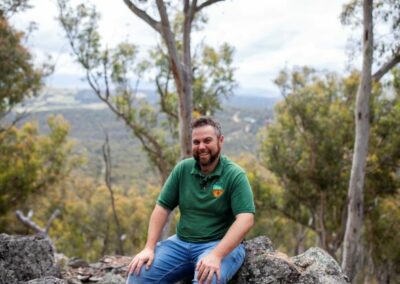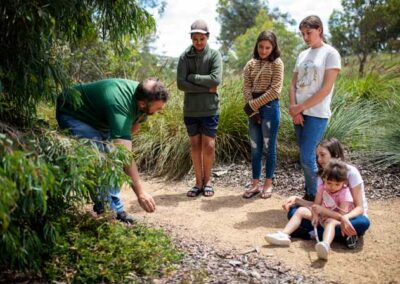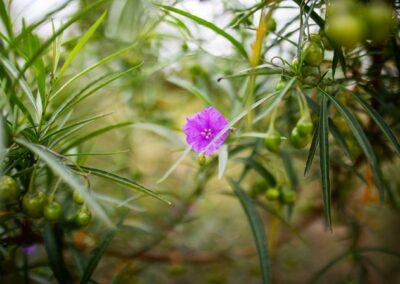
Local seasons: exploring First Nations weather knowledge
Time Allocation: 40 minutes
Activity Level: Moderate
Introduction
This activity introduces children to going outside and experiencing the seasons.
First Nations people observe the seasons change and they know when it is best to collect food such as fruits or seeds, what type of shelter they would need to make, what clothing they would need to keep warm and when to move from one place to another.
To understand local stories and support these activities, we recommend reaching out to your local Traditional Owners and First Nations peoples community groups, who can assist in knowledge sharing and understanding local land, histories and culture.
Checklist
Instructions
 STEP 1
STEP 1
Begin with an Acknowledgement of Country.
Complete the Whose Country are you on? learning activity to determine your local First Nations peoples language group.
Acknowledgment – We would like to say thank you to the First Nations peoples (refer to your local group if you know it) who have cared for and continue to care for this Land we are on for thousands of years. We promise that we are going to care for the Land and all of the plants and animals that live in it.
Conduct a discussion on seasons and what the children know.
Ask the children what they know about seasons. What is the temperature like outside for each season? Is it hot, cold or in the middle?
How many seasons are there? Is it just four, or are there more?
Following your discussion, find a place outside to sit away from others. Use all your senses to observe what is around you for 10 minutes.
Even in an urban area, look for native species you might observe such as insects, birds and plant growth or development.
 STEP 2
STEP 2
Use the journal page of the activity sheet to record your observations by writing or drawing.
What do you see? Is it sunny? Is it cloudy? What are the clouds like? Are they moving fast or slow? What are the birds and animals doing?
What do you feel? Is it cold or is it hot? Can you feel the wind? Can you feel the warmth of the sun?
What do you hear? Can you hear the wind? Can you hear birds? Can you hear any insects? What are they doing? What other noises can you hear?
What can you smell? Flowers? Rain? The earth?
 STEP 3
STEP 3
Encourage discussion by retelling the seasons story from Adam and Jarrah in the activity sheet. These seasons include: first summer, deep summer, first winter, deep winter, first spring, deep spring.
Explain that in the story Jarrah was on a walk with Adam and as he learnt about the seasons, Jarrah wrote it down and drew pictures.
Ask the children to use their observations and discuss what season they are in.
 STEP 4
STEP 4
Using the My Seasonal observations page of the activity sheet, draw or write about at least one thing you observe locally. Look at the animals, plants and weather to help describe the season you are in.
You may like to do this activity again at another time during the year to observe the differences.
Extension Activity
Extension 1
Connect with your local First Nations community and invite them to share their knowledge with you.
Extension 2
Use information from the Bureau of Meteorology’s Indigenous Weather Knowledge site and find the Seasonal calendar from the First Nations community closest to you. Select a Language group and open the page showing the seasons for that group. Compare with the seasons in the story. Use with other online resources or books to construct a chart or write a story about the seasons in your area. You may like to use pictures to help.
Extension 3
Share your knowledge and tell a story about how a plant or animal changes through the seasons.